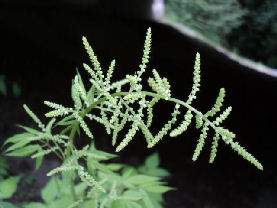|
|
|
|
|
|
| Practical ecological knowledge for the temperate reader. |
Goatsbeard - Aruncus dioicus
- Family: Rosaceae - Rose [E-flora]
- Other Names: Bride's feathers; goat's-beard [E-flora]
- Cyanogenic glycosides Budlings, Stems, Young leaves, Young Shoots Hair Wash/Parasiticide, Perfume Flu, Stomach Pains, External Uses
Description
- General Erect.[WildPNW] Growing to 6-9ft. Smooth.[PFAF] 1-2.5 m. tall.[HNW] Hairless.[PCBC2004]
- Lifecycle Perennial.[PFAF][HNW]
- Flowers Inflorescence a large, elongated, terminal panicle with numerous spike-like branches of tiny, short-stalked flowers.[IFBC][E-flora] The flowers are dioecious (individual flowers are either male or female, but only one sex is to be found on any one plant so both male and female plants must be grown if seed is required) and are pollinated by Insects.[PFAF] Small white flowers, in long narrow sprays.[PSW]
- Fruits Seeds 2 to 4 per follicle, about 2 mm long.[IFBC][E-flora] Straw-colored follicles.[PCBC2004]
- Leaves Alternate, 10-60 cm long, long-stalked.[IFBC][E-flora] Compound. 2-3 pinnate, leaflets to 15cm.[HNW] Leaflets sharply toothed and pointed. Upper leaves smaller and less compounded.[PCBC2004] Leaves slightly hairy; leaflets widely oval.[WildPNW]
- Stem Several stems.[PCBC2004]
- Root stout short-creeping rhizome.[IFBC][E-flora]
- Habitat Damp woods, shady places and by streams, usually in mountainous areas[50, 187].[PFAF] "In shady moist woods and logged-off lands and along."[HNW] Edge habitats such as roadsides, streams, etc.[PCBC2004]
- Range Europe, N. America and Asia.[PFAF] Circumboreal; North to Alaska and South to California.[IFBC][E-flora]
- Status Native.[E-flora]
- Ecological Indicator "A shade-tolerant/intolerant, submontane to subalpine, circumpolar forb distributed in the Pacific, Cordilleran (less frequently), and Atlantic North America. Occurs on fresh to very moist, nitrogen-rich soils within boreal, cool temperate, and cool mesothermal climates. Commonly inhabits exposed mineral soil on water-receiving flooded sites. Scattered in earlyseral herbaceous communities in the proximity of intermittent or permanent waterways and run-off channels on steep, often shallow and rocky, colluvial slopes; less frequent in opencanopy, steep-gradient, streamedge forests. A nitrophytic species characteristic of Moder and Mull humus forms"[IPBC][E-flora]
- Notes Quite long-flowering in moist spots.[IFBC][E-flora]
Synonyms
- Aruncus sylvester [E-flora]
- Aruncus sylvester var. vulgaris [E-flora]
Hazards
- Cyanogenic glycosides: Found in the leaves. [PFAF][Quattrocchi WDMPP]
- Var. dioicus [Hung Vo et al.][Quattrocchi WDMPP]
- Var. vulgaris [Quattrocchi WDMPP]
Food
- Aruncus dioicus var. kamtschaticus (Rosaceae) is the major wild leafy vegetable produced in Ulleungdo, Korea.[MAP][Hung Vo et al.] young edible stems and leaves eaten as asparagus; traditionally collected in Friuli Venezia Giulia and Veneto region.[ETWP]
- Budlings: Cooked.[177][PFAF]
- Stems: Cooked.[177][PFAF]
- Young Leaves: Cooked.[177][PFAF]
- Young Shoots: The young shoots are very popular. They are gathered in March, boiled briefly in water, sometimes with a few aromatic plants such as sage, rosemary, oregano, and then cooked with eggs and cheese. Sometimes eaten raw in salads. Two previous ethnobotanical studies carried out in Piedmont [41] and in Veneto [42] mentioned that this wild vegetable is consumed in a similar way. It is one of the ingredients in a local home-made soup based on wild greens called pistic [11]. [IOT]
- Leaves: Salad, cooked vegetable, 2/5 edbility rating. [Pieroni EBDBalk]
Other Uses
- Soap: The dried root was rubbed in water and used as soap. [Turner&Bell2]
Medicinal Uses
- Root: "Tea used to allay bleeding after child birth, to reduce profuse urination and to treat stomach pains, diarrhoea, gonorrhea, fevers, and internal bleeding.[222,257]" [PFAF] The roots were used as a medicine for coughing. The dried root was soaked, scraped and held in the mouth (Boas, 1966).[Turner&Bell2] Bella Coola: Roots boiled, and one or two cups of the decoction (or as much as desired) taken internally for pain in the stomach and gonorrhoea. A diuretic, but neither a laxative nor an emetic. Roots boiled in grease of mountain goat (Oreamnos montanus Ord.) for a day and the decoction taken internally for smallpox.[Smith(1927)]
- Flu: Decoction of washed roots taken for influenza. It was said that too much of the decoction should not be taken because it would make you sick. [Moerman NAE]
- Poultice "Applied to bee stings.[222,257]" [PFAF][Banks POTC]
- Externally: "The tea is used externally to bathe swollen feet and rheumatic joints.[222,257] A salve made from the root ashes is rubbed onto sores[257]" [PFAF] The infusion was used to bathe the swollen feet.[Banks POTC]
- Profuse Urination: Beat the root fine and boil a while in water. Cool and drink while warm. [Banks POTC]
- Birthing Aid: A hot root tea was given to a mother in childbirth to prevent excess bleeding.[Banks POTC]
Ethnobotany
- Var. acuminatus; North America; Root decoction - Cold, indigestion, flu. [Quattrocchi WDMPP]
- Var. allegheniensis; North America; Root decoction - internal ailments, colic, abdominal pain, flu.[Quattrocchi WDMPP]
- Var. dioicus (A. vulgaris); North America; Same uses as Var. vulgaris.[Quattrocchi WDMPP]
- Var. kamtschaticus (A. sylvester); China; Root decoction - Stomachache and/or gonorrhea. Root Poultice - Applied to sores. Root infusion - To treat diarrhea, sore throat, fever, gonorrhea, rheumatism, colds, and kidney trouble.[Quattrocchi WDMPP] "...oriental traditional medicine, Aruncus dioicus var kamtschaticus (ADK) is used for hemostasis (blood stopping) and the promotion of blood circulation. Recently, the demands of the aerial part of ADK as edible mountain herbs are rapidly increased due to its unique fragrance and bioactivity." [Kim&Sohn2014]
- Var. vulgaris; North America; Root decoction - flu. Root Poultice - bee stings. Root Infusion - "Astringent, antipyretic, stomachic, blood purifier," Used for foot bath, excessive urination, internal wounds and stomach problems.[Quattrocchi WDMPP]
Pharmacology
- Var. kamtscaticus
- This plant possesses numerous effects such as antioxidant, antidiabetic,and anti-AIDS effects. It can be used in the prevention and treatment of ischemic and degenerative brain diseases. The dried sprouts of this plant have been used for foods and the aerial parts to treat intoxification and tonsillitis.[MAP][Hung Vo et al.] antioxidant and anti-wrinkling: "...the ethanol extract has better antioxidant and anti-wrinkling effects than the water extract....[Aruncus dioicus var. kamtschaticus] provides a remarkable and significant tensor and anti-wrinkling effect on the skin, which could be of a great use in anti-aging skin care products." [Youn et al.,2012]
Phytochemistry
- Var. kamtscaticus
- Sambunigrin (aerial parts)[Hung Vo et al.]
- Prunasin (aerial parts)[Hung Vo et al.]
- 1-O-caffeoyl-?-D-glucopyranose (aerial parts)[Hung Vo et al.]
- caffeic acid (aerial parts)[Hung Vo et al.]
Monoterpenoids
- 4-(erythro-6,7-dihydroxy-9-methylpent-8-enyl)furan-2(5H)-one (aruncin A), (aerial parts) [Jeong et al.]
- 2-(8-ethoxy-8-methylpropylidene)-5-hydroxy-3,6-dihydro-2H-pyran-4-carboxylic acid (aruncin B), (aerial parts) [Jeong et al.]
- aruncide A (aerial parts)[Hung Vo et al.][Jeong et al.]
- (3S,4S,5R,10 R)-3-(10-ethoxy-11-hydroxyethyl)-4-(5-hydroxy-7-methylbut-6-enyl)oxetan-2-one-11-O-b-D-glucopyran oside (aerial parts) (aruncide B)
- aruncide C (aerial parts) [Hung Vo et al.][Jeong et al.]
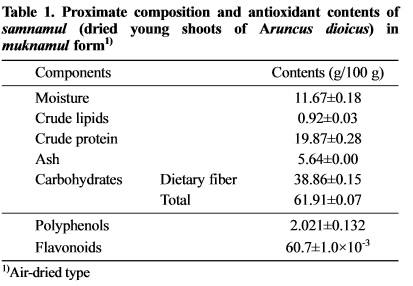
[????]
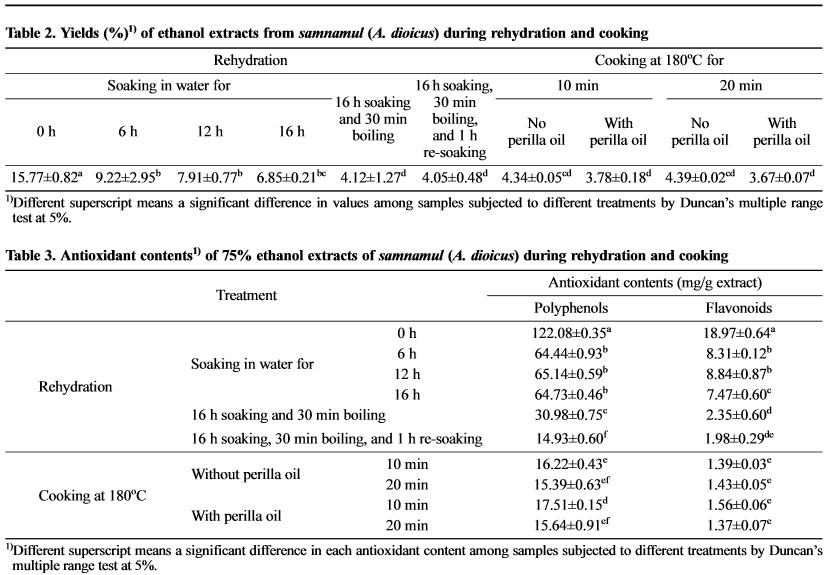
[????]

[????]
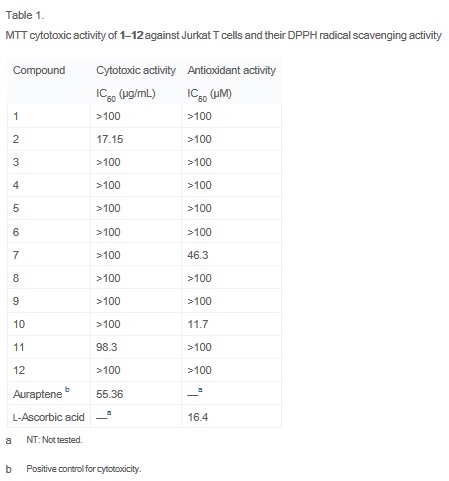
[????]
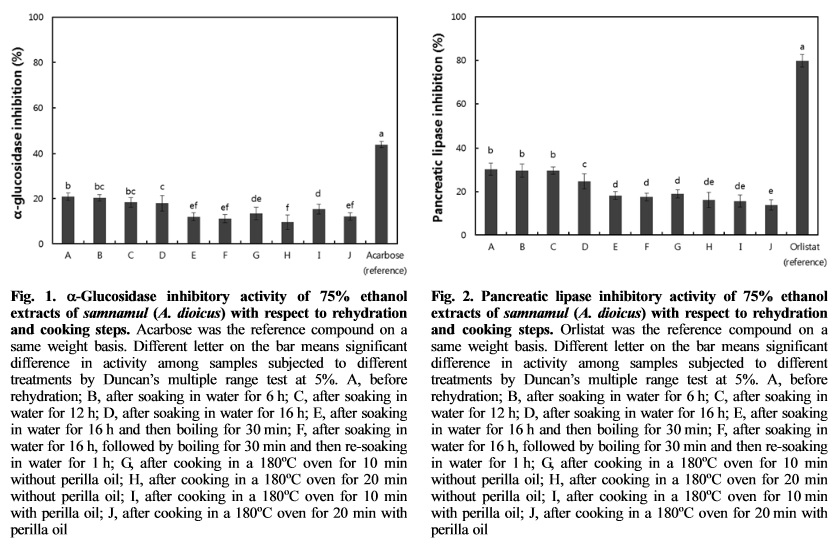
[????]
Cultivation
"Succeeds in most moist soils in sun or partial shade[187, 200, 233]. Plants do well in moist to wet soils but will also tolerate fairly dry sites[208]. Succeeds in acid or limey soils[208]. Grows well on the woodland edge[200]. Plants can be grown in quite coarse grass, which can be cut annually in the autumn[233]. Plants are hardy to at least -20°c[187]. This is a polymorphic species, especially the form that grows in Japan[187]. There are some named forms selected for their ornamental value, 'Kneiffii' is only half the size of the type species[208]. Plants are fast-growing[208] and form very large clumps[187]. The flowers are sweetly perfumed[245]. Dioecious, male and female plants must be grown if seed is required[208]." [PFAF]
Propagation
"Seed - best sown in a cold frame as soon as it is ripe. Sow stored seed in late winter or early spring in a cold frame. When large enough to handle, prick the seedlings out into individual pots and grow them on in a cold frame until they are at least 15cm tall. They can be planted out into their permanent positions at any time of the year. Division in early spring or autumn[200]. Very easy, the clumps can be planted out direct into their permanent positions." [PFAF]
ARUNCUS - GOAT'S BEARD
Rose Family
1 sp.: northern temperate North America, Europe. (Latin: goat's beard, for inflorescence)
[Jepson]
Local Species;
- Aruncus dioicus - goatsbeard [E-flora][PCBC][TSFTK]
References
- E-flora - http://linnet.geog.ubc.ca/Atlas/Atlas.aspx?sciname=Aruncus%20dioicus Accessed March 17, 2015
- IFBC - Illustrated Flora of B.C., 1998-2002 Douglas, G.W., G.B. Straley, D.V. Meidinger, and J. Pojar (Editors) http://www.for.gov.bc.ca/hfd/pubs/docs/Mr/MR_IllustratedFlora.htm
- IPBC - Indicator Plants of Coastal British Columbia, Karel Klinka, V. J. Krajina, A. Ceska, A. M. Scagel, 1989
- Hung Vo et al. Bioactive Constituents from the n-Butanolic Fraction of Aruncus dioicus var. kamtschaticus, Quoc Hung Vo, Phi Hung Nguyen, Bing Tian Zhao, Yen Nguyen Thi, Duc Hung Nguyen, Won Il Kim, U Min Seo, Byung Sun Min, and Mi Hee Woo, Natural Product Sciences 20(4) : 274-280 (2014) http://www.researchgate.net/publication/272354029_Bioactive_Constituents_from_the_n-Butanolic_Fraction_of_Aruncus_dioicus_var._kamtschaticus
- IOT - The importance of a taste. A comparative study on wild food plant consumption in twenty-one local communities in Italy, Journal of Ethnobiology and Ethnomedicine 2007, 3:22
- Jepson - T. Lawrence Mellichamp & Margriet Wetherwax, 2012. Aruncus, in Jepson Flora Project (eds.) Jepson eFlora, http://ucjeps.berkeley.edu/cgi-bin/get_IJM.pl?tid=54498, accessed on Mar 12 2014
- Kim&Sohn2014 - Anti-thrombosis Activity of the Aerial Part of Aruncus dioicus var kamtschaticus, Mi-Sun Kim and Ho-Yong Sohn, Department of Food and Nutrition, Andong National University, Andong, Korea
- MAP - Monoterpenoids from the aerial parts of Aruncus dioicus var. kamtschaticus and their antioxidant and cytotoxic activities, Su Yang Jeong, Do Youn Jun, Young Ho Kim, Byung-Sun Min, Bo Kyung Min, Mi Hee Woo, Bioorganic & Medicinal Chemistry Letters Volume 21, Issue 11, 1 June 2011, Pages 3252–3256
- PFAF - http://www.pfaf.org/user/Plant.aspx?LatinName=Aruncus+dioicus , Accessed March 17, 2015
- Youn et al.,2012 - Antioxidant and Anti-wrinkling Effects of Aruncus dioicus var. kamtschaticus extract, Jin-Suk Youn, Seung-Yong Shin, Yongxiang Wu, Ju-Young Hwang, Jae-Ho Cho, Yong-Geun Ha, Jin-Ki Kim, Min-Jeong Park, Seonho Lee, Tae Hoon Kim and Taewan Kim, Korean J Food Preserv 19(3), 393-399 (2012)
Page last modified on
8:29 PM September 7, 2024
